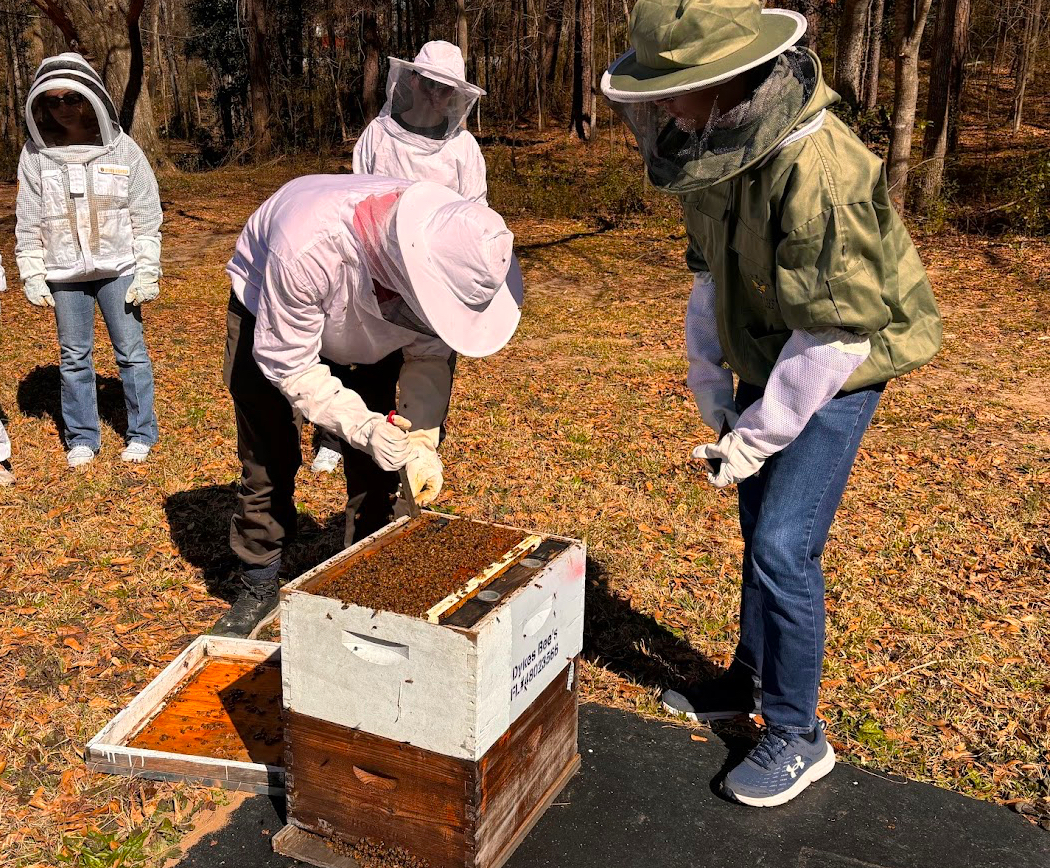On any given Sunday when the weather is nice and school is in session, you can find members of the UA Sport Bikes club zipping by on a secluded back road off Alabama State Route 69.
“I found it by accident one day,” said Brian Taylor, founder of the UA Sport Bikes club and a junior majoring in management information systems. “I stopped at a little mom-and-pop gas station and asked the owners if there were any good roads around to ride on. They pointed to a road and said it was nothing but curves, and if you went faster than 80 [mph], you’d probably die. So we went and checked it out and fell in love with the road.”
(See also “Motorcyclists united in shared interests“)
For Taylor, his interest in motorcycles came after realizing his love for cars wasn’t ideal for campus life, he said. He owned a 2010 Camaro SS, the same car as Bumblebee in “Transformers,” but found that with only 14 miles to the gallon plus the cost of expensive premium gas, the car was simply too expensive to drive. He traded in his Camaro for a smaller, more economical car and used the leftover money to buy his first sport bike.
Upon purchasing his Ninja CX-6R, Taylor said he searched for a motorcycle community to get involved with but found no luck.
“I got that bike and didn’t see any similar groups on Facebook, so I just created the group,” he said. “I added a couple of my friends that I knew had bikes already, and it kind of just grew from there.”
The UA Sport Bikes Facebook group now includes nearly 40 members.
Shortly after forming the Facebook group, Taylor ran into Matt Smith, a Tuscaloosa community member who has been riding street bikes since 1997, at a local gas station.
“He was riding with his girlfriend, and I was like, ‘Hey, you should hit up our group,’” Taylor said. “Matt was a very valuable asset to grab because he’s been doing this for a really long time, so he helps everyone out and gives them advice.”
Since joining the group, Smith has become the patriarch of the extended motorcycle family, taking on the role of teacher and friend to less experienced riders.
For Smith, riding sport bikes was a natural progression from riding four-wheelers and dirt bikes growing up in Michigan. Smith said his addiction to motorcycles is to the point where if it’s a nice day, he considers taking the day off from work to go riding.
“For me, it’s just kind of an escape,” Smith said. “I’m not a college kid anymore, so I’ve got all kinds of big-kid responsibilities. Stuff starts to just wear on you, so you get on your bike, get out and forget everything. I don’t have to worry about anything. It’s just me and the bike, and to me, that’s really relaxing.”
(See also “UA grad bikes across country“)
In addition to riding with the group, Smith said he rents track time at Barber Motor Sports once a month so he can race on a professional track.
While Smith and Taylor are both dedicated to the group and passionate about riding motorcycles, they said many of the people who ride around town ride just to be seen.
“I wish there was more people like us who actually care about riding,” Taylor said. “The majority of the people you see on bikes are the inexperienced crowd. People go out and buy the biggest, fastest bike they can find and jump on them without really knowing how to ride.”
One of the group’s most active members, Casey Hassett, a junior majoring in nursing, said he started riding motorcycles because he was looking for a casual hobby but found himself getting far more involved than he could have predicted.
“I’m addicted,” Hassett said. “There’s nothing like it. There really just isn’t. You can go base-jumping, but that’s probably the only thing that might even come close. I love the rush of being able to be faster and more nimble than everything else on the road.”
The motorcycle bug has proven easy to catch. Hassett has gotten his current roommate, his older brother and father addicted to riding, and Taylor said his past three girlfriends have all gone on to buy sport bikes and ride consistently.
However, danger often comes along with the thrilling speed and adrenaline that riding motorcycles often brings.
Smith said he has been in more wrecks than he can count, including one where he was hit by a drunk driver and sustained a stage-three concussion. In another incident, the seam of his protective jacket split, and the Under Armor shirt he was wearing became embedded in his shoulder after making impact on the ground for only a few seconds.
“I learned the hard way,” Smith said. “It sucks when you fall if you don’t have the right stuff on. You can spend days in the hospital while they scrub the pavement out of your arm or back. It doesn’t take but a split second of impact on the ground, and you have an expensive trip to the hospital.”
Motorcycle gear, including a helmet, jacket, gloves, boots and pants, costs a minimum of $1,000. Smith said he spends well over that to make sure he rides as safely as possible.
“To me, it’s worth spending $800 for a helmet, because God only gave me one head,” Smith said. “You can never spend too much on protection.”
Although he has not yet been involved in a motorcycle accident, Taylor said statistically everyone who owns a motorcycle will wreck at least once. “You been down, or you’re going down” is a popular phrase among those who ride.
Despite the obvious dangers of riding motorcycles at speeds topping out at 150 mph, Taylor said he feels safer on motorcycles than he does in cars.
“I can control it better,” he said. “I feel like I’m in charge of everything that’s going on. I feel like I can do more on a bike.”
Smith said although the UA Sport Bikes group has become its own self-sufficient entity with members posting frequently to meet for ride days, the motorcycle scene always has room to grow.
“I’ve seen everyone from 13-year-old girls to 70-year-old men on bikes,” Smith said. “It doesn’t really matter, because when you’re riding, you’re riding.”
(See also “Students bike across nation, construct homes“)








